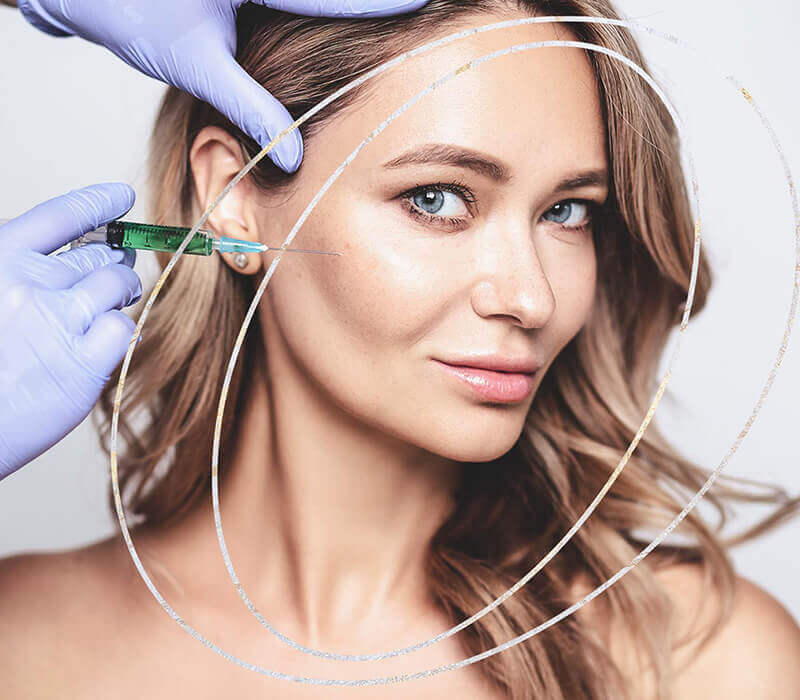
BOTOX® Cosmetic
BOTOX® is the perfect non surgical way to treat signs of aging in the upper face and is frequently used as a preventative anti-aging treatment.- You look in the mirror and feel like those forehead creases are looking a little deeper.
- There seems to be a line appearing between your eyebrows.
- Those crow’s feet around your eyes are making you look more aged than they should.
For a non surgical solution to facelifts, BOTOX® makes the ideal alternative and is often combined with Dermal Fillers to achieve a natural look.
Schedule a Consultation
What is BOTOX® Cosmetic?
This microbe can cause botulism (a form of food poisoning) in large amounts, but in small, diluted amounts, the scientific community has found a way to use it for cosmetic purposes. Injections of Botox are used to soften moderate to severe facial wrinkles and is an invaluable part of an anti-aging medical skincare treatment plan.
Before & After
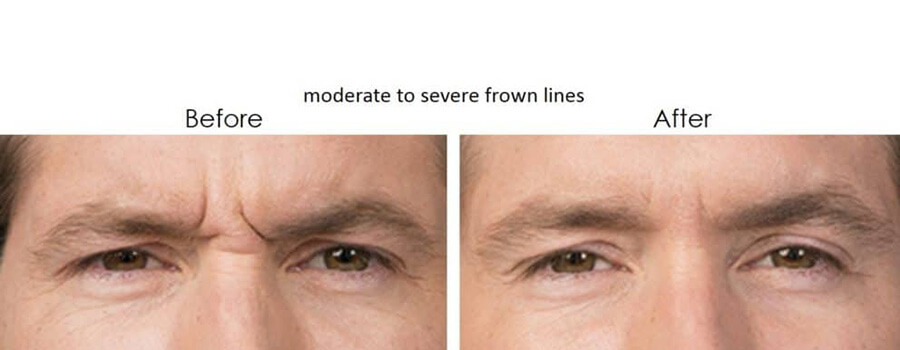
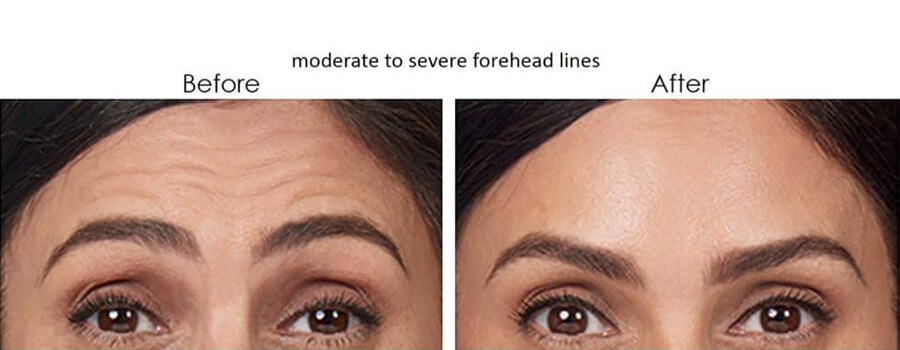
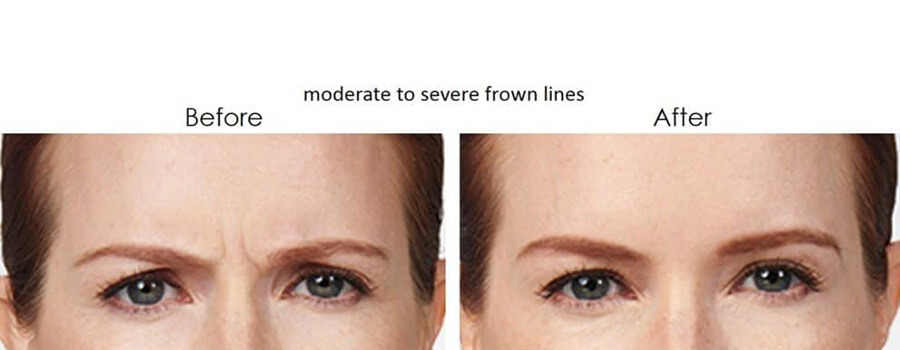
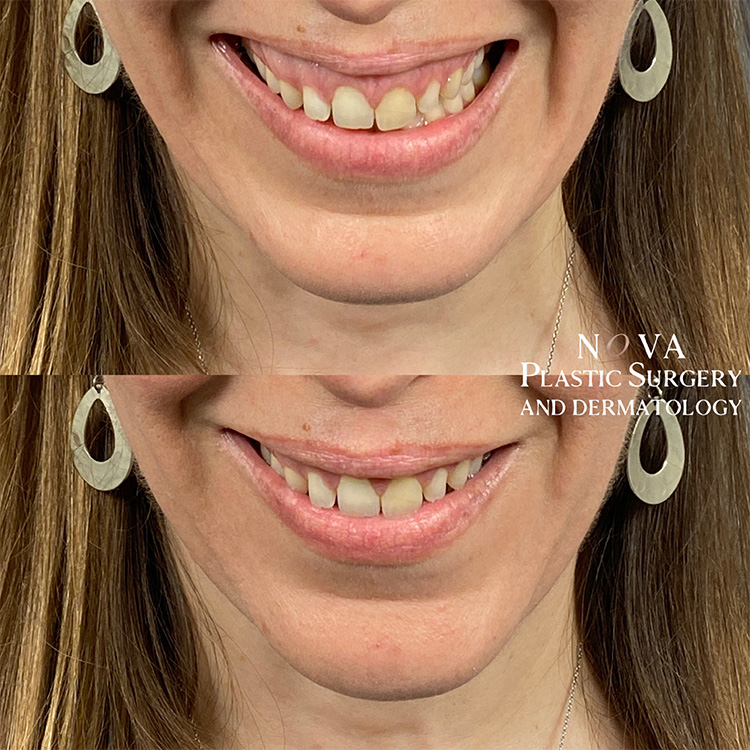
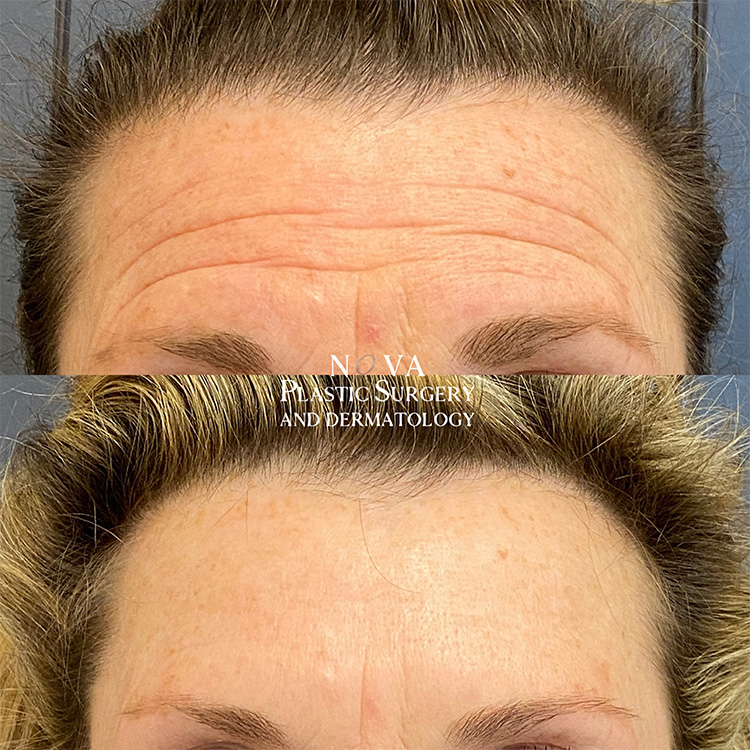
Why Get BOTOX® Injections?
When we use the same facial muscles to make the same expressions over and over, it can cause deep wrinkles to develop. Botox injections will relax the facial muscles that you use most often. The skin over the wrinkle will then relax as well, which causes the wrinkle to soften. BOTOX® is most commonly used on the wrinkles between the eyebrows.
The treatment is also useful for forehead creases, crow’s feet, and other wrinkles of the upper part of the face. Since you need the muscles around your mouth to chew and speak, Botox treatments aren’t administered in those areas as commonly. It is not an effective treatment for wrinkles that are caused by gravity or excessive exposure to the sun, since those do not involve the muscles. There are also many medicinal uses for Botox, such as treating excessive sweating, and migraine headaches.
Contact UsHow Does BOTOX® Cosmetic Work?
Once the muscle stops contracting and relaxes, the skin on top of it will soften as well. The wrinkles will become visibly softer, and since the muscle is weakened, the wrinkles will not become deeper.
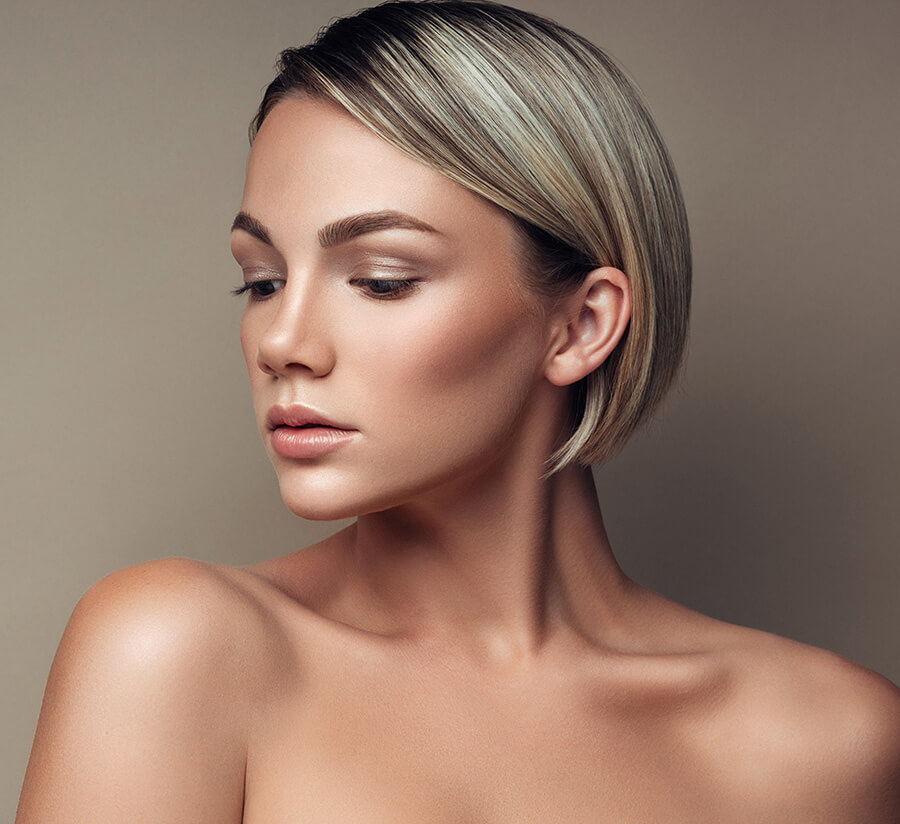
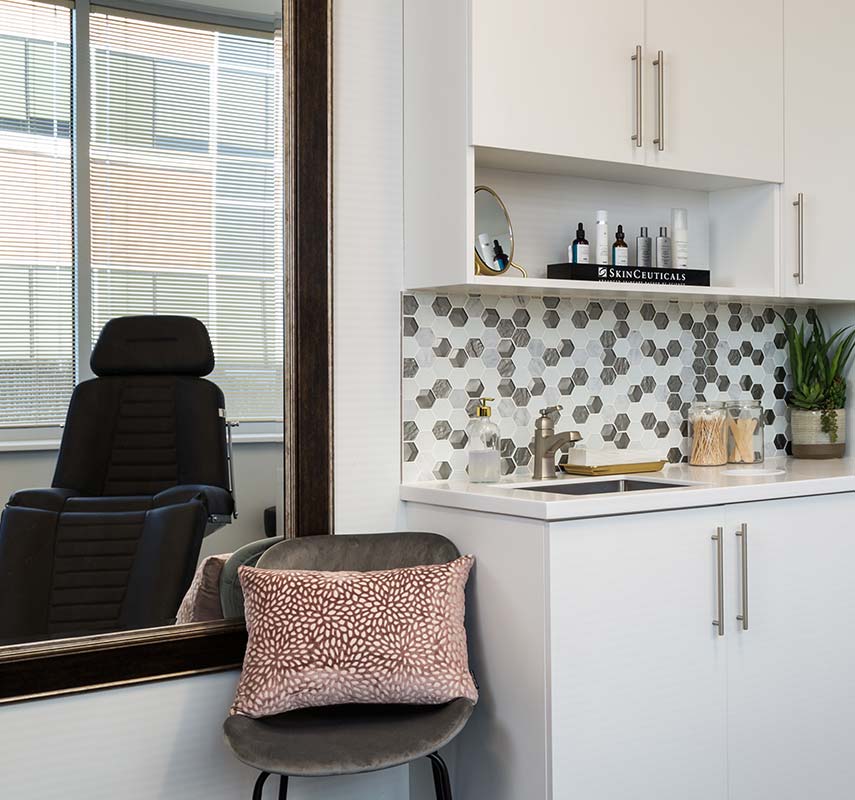
Who is A Good Candidate for BOTOX® Treatment?
The patient should be at least 18 years old, and not pregnant and/or breastfeeding. You should have realistic expectations for the outcome of the surgery, and have concerns about the moderate to severe expression lines on your face. There are a few contraindications for Botox treatment.
If you have one or more of the following issues, Botox might not be right for you:
- Skin problems around the expression lines you want to treat
- Drooping eyelids
- Muscular issues such as pronounced weakness in the facial muscles you want to treat
- Severe allergies
- Severe skin reactions to injections
- Scars or very thick skin around the injection site
Come in for a consultation if you are unsure if you have any of these issues. Our skilled Physician Assistants will discuss your situation with you to determine if BOTOX® treatment is right for you.
What Happens During My Consultation for BOTOX®?
She will evaluate the skin of your face and assess the expression lines that are causing you concern. The injections can sometimes be given in the same appointment, depending on how many units you need, what medications you’re on, your current lifestyle, and how much time you have. If you need to come back for the treatment, your injector may ask you to stop taking certain blood-thinning medications beforehand. You may also need to stop drinking alcohol for about one week prior to treatment.
Schedule a ConsultationHow is a BOTOX® Treatment Done?
You won’t need any anesthetic or time off from work. The medication will be injected into the target muscle using very small, fine hypodermic needles. There might be a pinching sensation or some other small feeling of discomfort during the injection, but that should fade quickly. You might need more than one injection, depending on the size of the muscle or muscles you are working on. Once the injections are complete (usually in no more than 30 minutes), you will want to avoid rubbing the area for 12 hours.
What is Recovery Like for BOTOX® Treatment?
There is no real downtime for BOTOX®, though you may experience some mild bruising or tenderness in the injection site. You can return to your normal routine immediately after leaving the office. Again, avoid rubbing the area or lying down for three to four hours after the procedure because that can cause the medication to shift.
When Can I See My Final Results?
The results of BOTOX® usually take between three and seven days to become apparent. The exact time frame will vary from patient to patient.
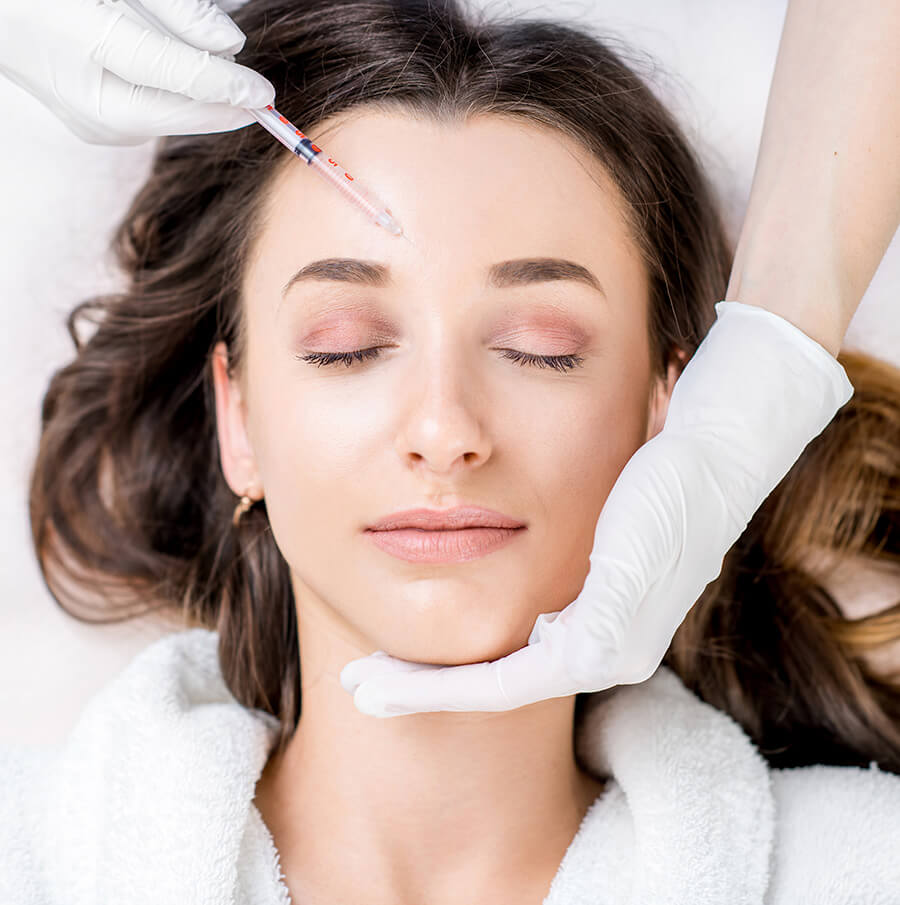
Botox Care Instructions
- Botox truly is a no down time procedure and there are few restrictions following a BOTOX® treatment. We recommend the following guidelines.
- You may notice small areas of redness and/or small bumps at the injection sites immediately following your treatment. These will resolve quickly, usually within 15 minutes.
- Refrain from heavy exercise for 24 hours after your treatment.
- Avoid lying down for 4 hours after your injections.
- It can be helpful to make facial expressions purposely after receiving BOTOX®, such as smiling and frowning to help the Botox to find its way into the muscle.
- Avoid rubbing the areas that have been treated with Botox for the first 48 hours.
- You may apply makeup after any pinpoint bleeding has resolved.
- Your treatment will take effect in 3-7 days. We recommend that you make a follow up appointment for 2 weeks after your treatment so that we can evaluate your results and determine if any adjustments to your dose need to be made, especially if this is your first time getting Botox with us.
- Contraindications to BOTOX® include known allergy to botulinum toxin, certain neuromuscular disorders, or if you are pregnant or nursing. Please inform us of any allergies or medical conditions you may have.
- Avoid blood thinning medications such as Ibuprofen (Motrin or Advil), Aspirin, naproxen (Aleve) for 5 days prior to your treatment and for 3 days after. These may increase your chances of bruising. Inform your doctor if you are on any prescription blood thinning medications (do not stop taking prescription medications unless specifically instructed to do so).
- Do not drink alcohol or take Vitamin E the day prior to treatment and the day after your treatment as this can also increase bruising.
- Schedule your treatment at least 2 weeks prior to a big event to allow the results to fully appear and so that any bruising has time to resolve.
- Be sure to have a good breakfast/lunch on the day of your procedure. This will reduce the chance of any lightheadedness during the procedure.
